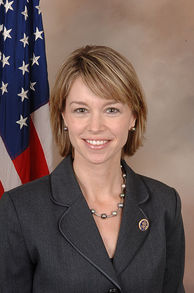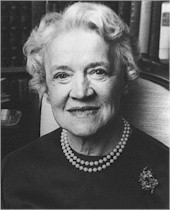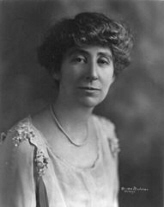Herseth Sandlin and the US House to Senate Pathway
Just 10 of the 44 female U.S. Senators in history first served in the House of Representatives and three of the last 13 since 2002

The former Democratic U.S. Representative stated she wished to spend more time with her family and at her new position as general counsel at Raven Industries.
Herseth Sandlin was considered to be the strongest Democrat to run for the seat, although her chances were probably shy of 50/50 in the deep red state despite already being elected in a statewide race four times from 2004 through 2008.
While the former at-large U.S. Representative stated that she had confidence she could win the race, through the decades the U.S. House has not been a surefire pathway for women to land Senate seats.
Overall, twice as many ex- or sitting female U.S. Representatives have lost Senate bids (20) than have won them (10).
And, despite a boost in victorious female U.S. Senate candidates over the last decade leading to a record number of women currently serving in the chamber, very few of these came from the House of Representatives.
Of the last 13 women to serve in the U.S. Senate over the last five election cycles dating back to 2002, just three had previously served in the House of Representatives – Democrats Mazie Hirono of Hawaii, Tammy Baldwin of Wisconsin, and Kirsten Gillibrand of New York, who was first appointed to her Senate seat in 2009 and then won a special election in 2010.
Four sitting or former female U.S. Representatives lost bids for Senate seats during that 10-year span: Georgia Democrat Denise Majette in 2004, Florida Republican Katherine Harris in 2006, New Mexico Republican Heather Wilson in 2008 and 2012, and Nevada Democrat Shelley Berkley in 2012.
Overall, just 10 of the 44 female U.S. Senators in history had previously served in the House.

Smith served five terms in the House before winning her first of four Senate contests in 1948 in an open seat race.
The next woman from the House of Representatives to win a Senate seat was Maryland’s Barbara Mikulski some 38 years and eight female Senators later.
Since 1986, just nine of the 29 female Senators (including Mikulski) had served as lawmakers in the nation’s lower legislative chamber, while ex- or sitting female U.S. Representatives launched another 14 failed Senate campaigns, for a 39.1 percent victory rate.
In addition to Smith and Mikulski, the remaining eight Senators are:
· California Democrat Barbara Boxer (five U.S. House terms, elected 1992).
· Maine Republican Olympia Snowe (eight, 1992).
· Arkansas Democrat Blanche Lincoln (one, 1998).
· Michigan Democrat Debbie Stabenow (two, 2000).
· Washington Democrat Maria Cantwell (one, 2000).
· New York Democrat Kirsten Gillibrand (two, 2009).
· Hawaii Democrat Mazie Hirono (three, 2012).
· Wisconsin Democrat Tammy Baldwin (seven, 2012).
Seven of these 10 women won open seats (Smith, Mikulski, Boxer, Snowe, Lincoln, Hirono, Baldwin), two defeated incumbents (Stabenow, Cantwell), and one was appointed (Gillibrand).
Eight were elected (or appointed) to the Senate as sitting House members, while two had a gap in service: Lincoln (two years) and Cantwell (six years).

Rankin first lost the Republican nomination that cycle to Oscar Lanstrum and then ran as an independent and finished in third place winning 23.1 percent of the vote.
In Illinois’ 1930 U.S. Senate, one-term at-large Illinois U.S. Representative Ruth McCormick won the GOP nomination but was trounced by 33 points by Democrat James Lewis in the general election.
Other ex- or sitting U.S. Representatives who ran and failed to win U.S. Senate seats include California Democrat Helen Douglas (1950), Idaho Democrat Gracie Pfost (1963), Hawaii Democrat Patsy Mink (1976), New York Democrat Bella Abzug (1976), New York Democrat Elizabeth Holtzman (1980, 1992), New Jersey Republican Millicent Fenwick (1982), Indiana Democrat Jill Long (1986), Hawaii Republican Patricia Saiki (1990), Illinois Republican Lynn Martin (1990), Rhode Island Republican Claudine Schnieder (1990), New York Democrat Geraldine Ferraro (1992, 1998), Virginia Democrat Leslie Byrne (1996), Washington Republican Linda Smith (1998), Georgia Democrat Denise Majette (2004), Florida Republican Katherine Harris (2006), Nevada Democrat Shelley Berkley (2012), and New Mexico Republican Heather Wilson (2008, 2012).
Overall 226 of the 258 women who have served in the House never subsequently attempted a Senate run, or 87.6 percent.
One female U.S. Representative is already running for the U.S. Senate in the 2014 cycle: West Virginia Republican Shelley Moore Capito.
Seven of the 20 current women serving in the U.S. Senate previously served in the House of Representatives (35 percent) compared to 45 of the 80 men (56 percent).
Follow Smart Politics on Twitter.
